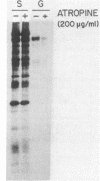Abstract
The antimuscarinic compound atropine shows an antiherpesvirus effect as measured by the protection of the cell monolayer and the reduction of the formation of new infectious virus. Atropine at a concentration of 200 micrograms/ml blocks the production of new infectious herpes simplex virus-type 1 virions. At that concentration, it has almost no effect on cellular or viral protein synthesis even when atropine is present from the beginning of the infection. The glycosylation of viral proteins is almost totally blocked when atropine is added. Although the viral proteins are underglycosylated, the formation of new herpes simplex virus type 1 virions takes place. The virions formed in the presence of atropine are noninfectious, and their protein composition, as assessed by labeling with [35S]methionine, is similar to that of the control, except that they are not glycosylated.
Full text
PDF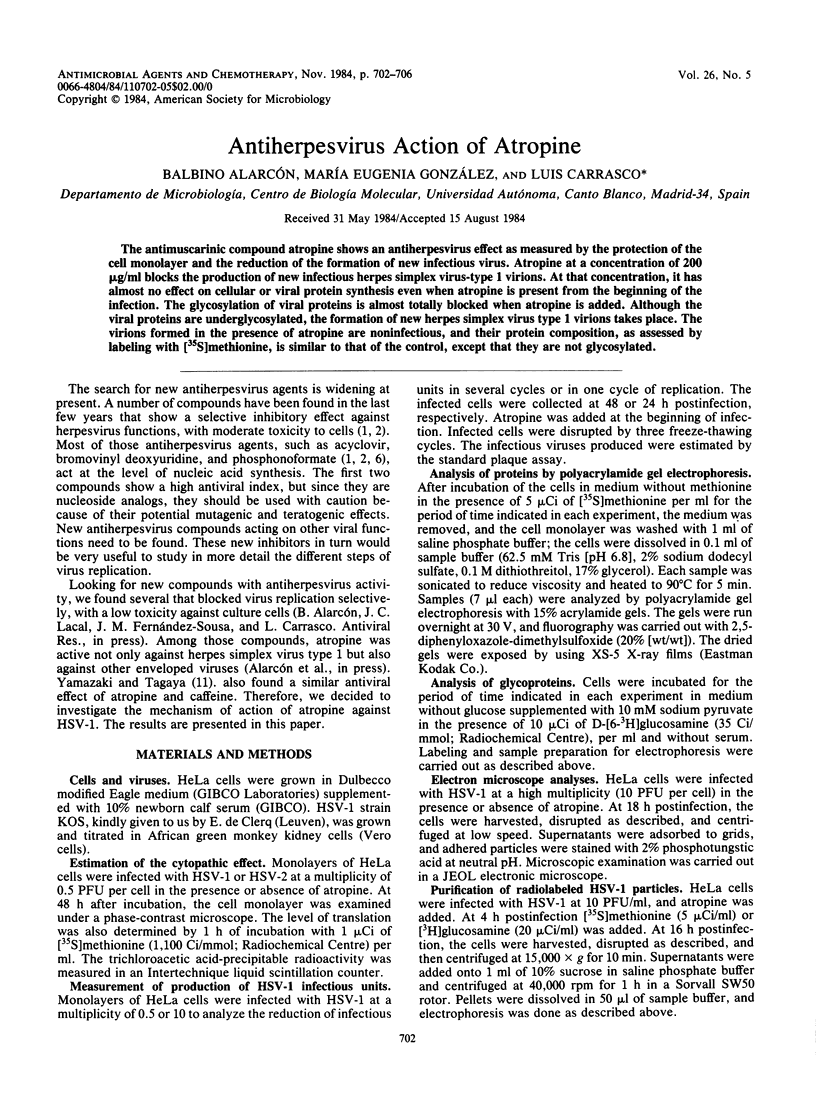
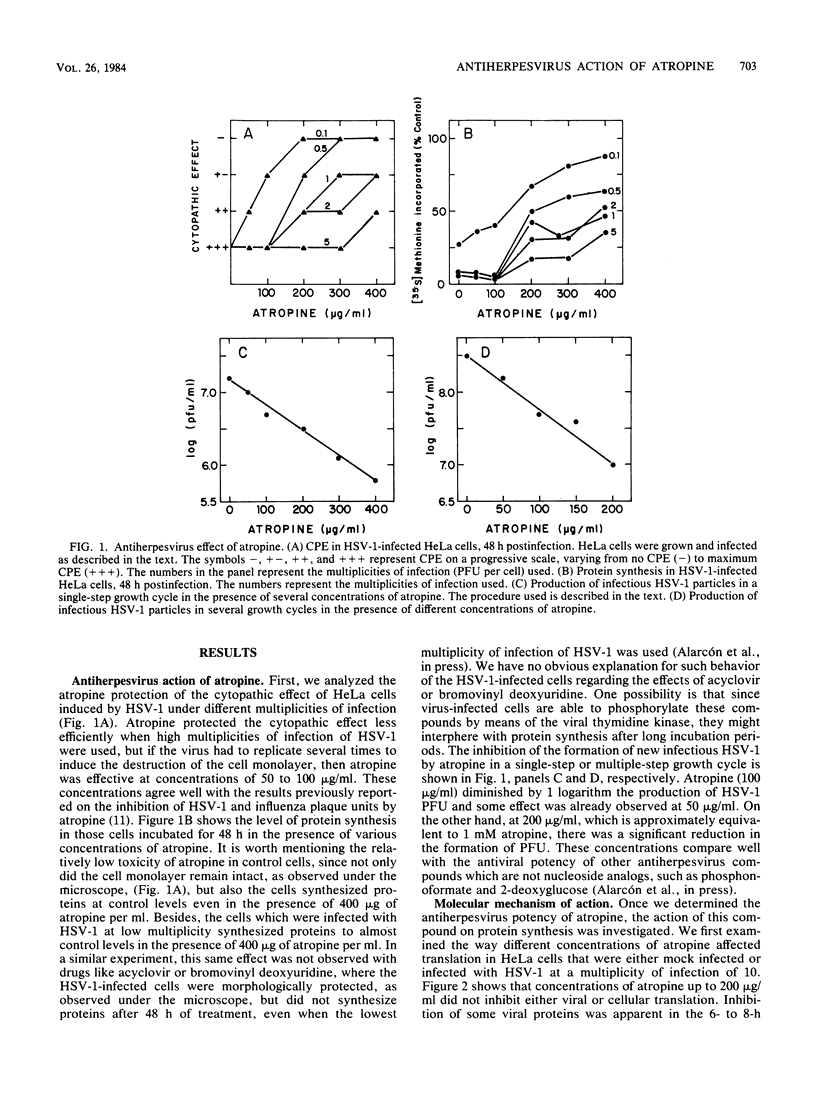
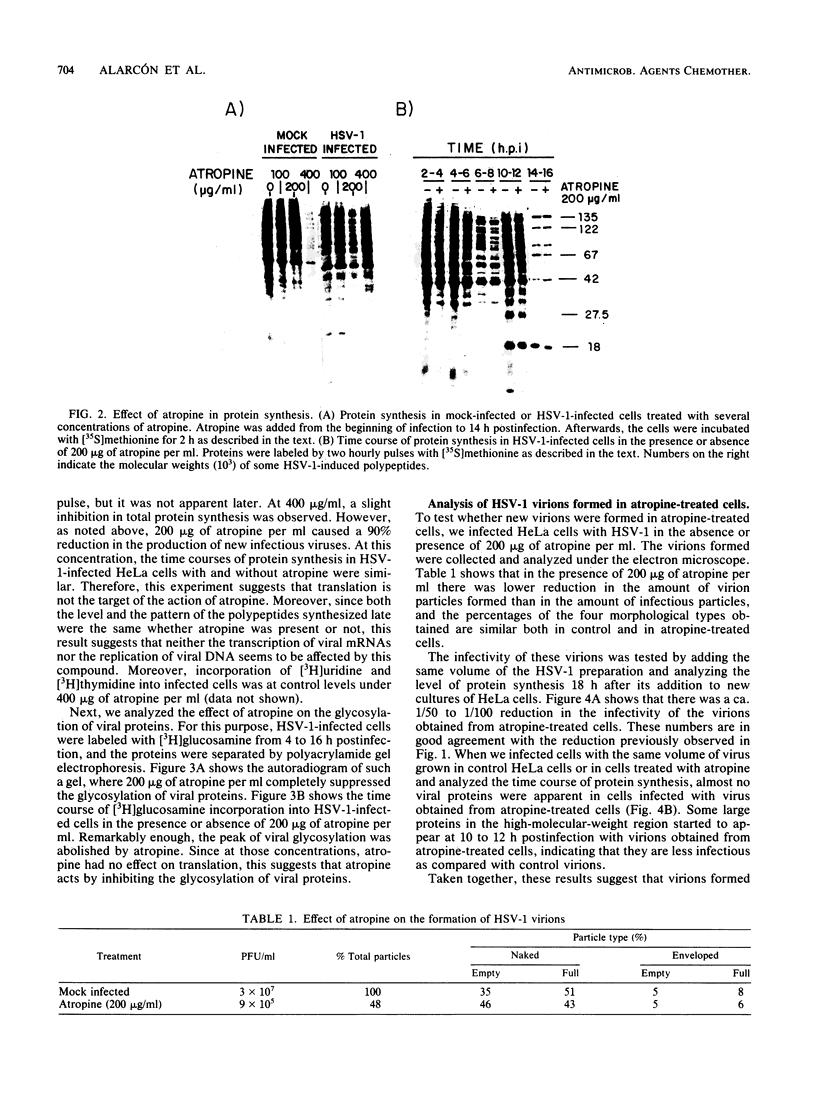
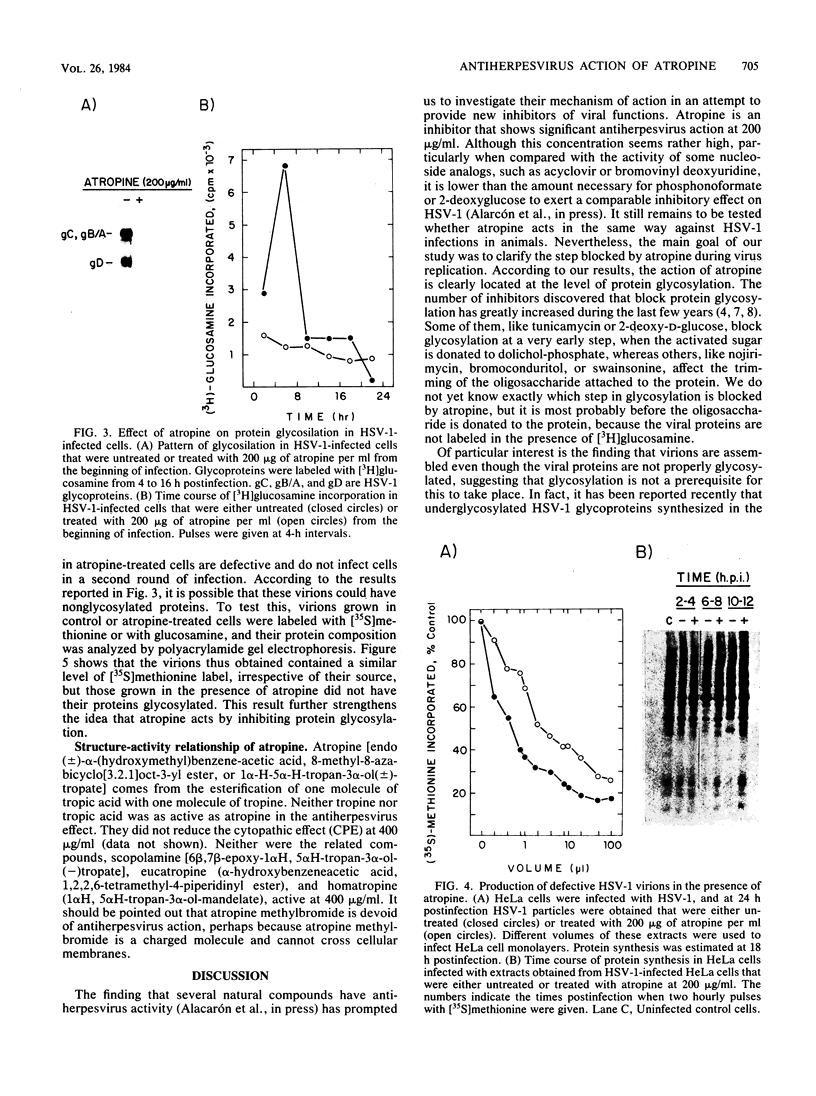
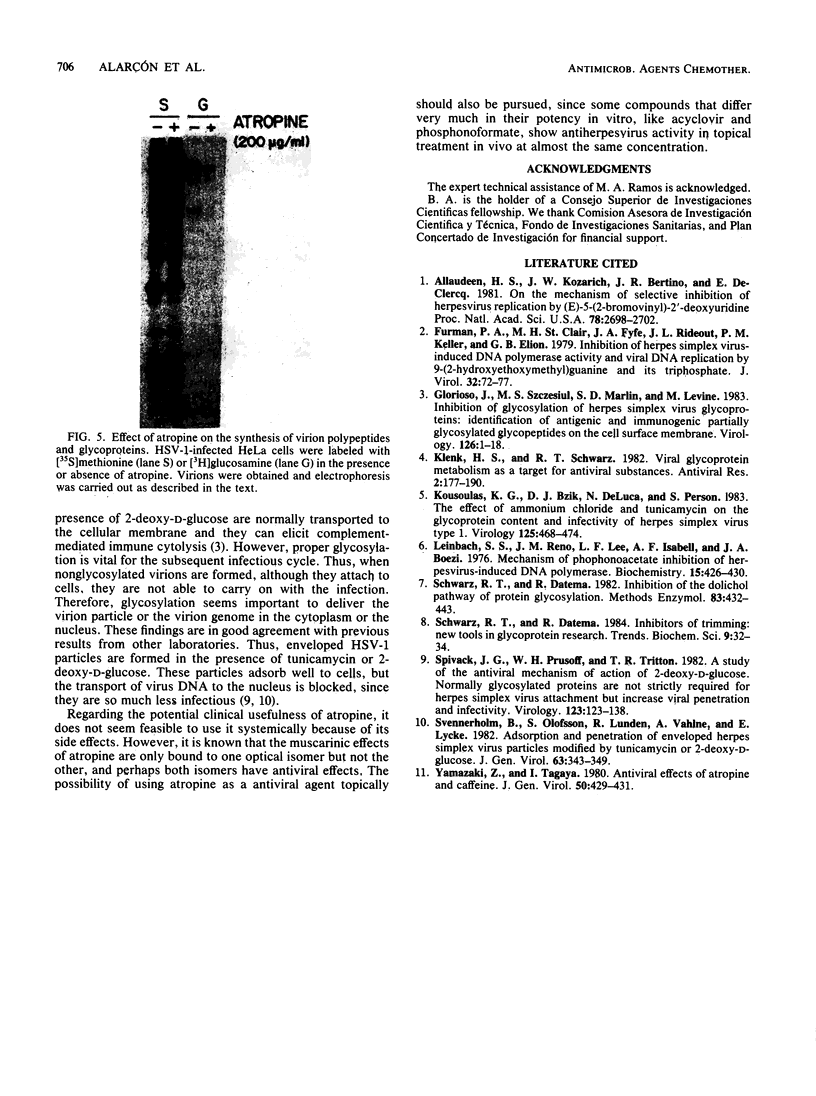
Images in this article
Selected References
These references are in PubMed. This may not be the complete list of references from this article.
- Allaudeen H. S., Kozarich J. W., Bertino J. R., De Clercq E. On the mechanism of selective inhibition of herpesvirus replication by (E)-5-(2-bromovinyl)-2'-deoxyuridine. Proc Natl Acad Sci U S A. 1981 May;78(5):2698–2702. doi: 10.1073/pnas.78.5.2698. [DOI] [PMC free article] [PubMed] [Google Scholar]
- Furman P. A., St Clair M. H., Fyfe J. A., Rideout J. L., Keller P. M., Elion G. B. Inhibition of herpes simplex virus-induced DNA polymerase activity and viral DNA replication by 9-(2-hydroxyethoxymethyl)guanine and its triphosphate. J Virol. 1979 Oct;32(1):72–77. doi: 10.1128/jvi.32.1.72-77.1979. [DOI] [PMC free article] [PubMed] [Google Scholar]
- Glorioso J., Szczesiul M. S., Marlin S. D., Levine M. Inhibition of glycosylation of herpes simplex virus glycoproteins: identification of antigenic and immunogenic partially glycosylated glycopeptides on the cell surface membrane. Virology. 1983 Apr 15;126(1):1–18. doi: 10.1016/0042-6822(83)90458-0. [DOI] [PubMed] [Google Scholar]
- Klenk H. D., Schwarz R. T. Viral glycoprotein metabolism as a target for antiviral substances. Antiviral Res. 1982 Sep;2(4):177–190. doi: 10.1016/0166-3542(82)90041-9. [DOI] [PMC free article] [PubMed] [Google Scholar]
- Kousoulas K. G., Bzik D. J., DeLuca N., Person S. The effect of ammonium chloride and tunicamycin on the glycoprotein content and infectivity of herpes simplex virus type 1. Virology. 1983 Mar;125(2):468–474. doi: 10.1016/0042-6822(83)90217-9. [DOI] [PubMed] [Google Scholar]
- Leinbach S. S., Reno J. M., Lee L. F., Isbell A. F., Boezi J. A. Mechanism of phosphonoacetate inhibition of herpesvirus-induced DNA polymerase. Biochemistry. 1976 Jan 27;15(2):426–430. doi: 10.1021/bi00647a029. [DOI] [PubMed] [Google Scholar]
- Schwarz R. T., Datema R. Inhibition of the dolichol pathway of protein glycosylation. Methods Enzymol. 1982;83:432–443. doi: 10.1016/0076-6879(82)83041-3. [DOI] [PubMed] [Google Scholar]
- Spivack J. G., Prusoff W. H., Tritton T. R. A study of the antiviral mechanism of action of 2-deoxy-D-glucose: normally glycosylated proteins are not strictly required for herpes simplex virus attachment but increase viral penetration and infectivity. Virology. 1982 Nov;123(1):123–138. doi: 10.1016/0042-6822(82)90300-2. [DOI] [PubMed] [Google Scholar]
- Svennerholm B., Olofsson S., Lundén R., Vahlne A., Lycke E. Adsorption and penetration of enveloped herpes simplex virus particles modified by tunicamycin or 2-deoxy-D-glucose. J Gen Virol. 1982 Dec;63(2):343–349. doi: 10.1099/0022-1317-63-2-343. [DOI] [PubMed] [Google Scholar]
- Yamazaki Z., Tagaya I. Antiviral effects of atropine and caffeine. J Gen Virol. 1980 Oct;50(2):429–431. doi: 10.1099/0022-1317-50-2-429. [DOI] [PubMed] [Google Scholar]






